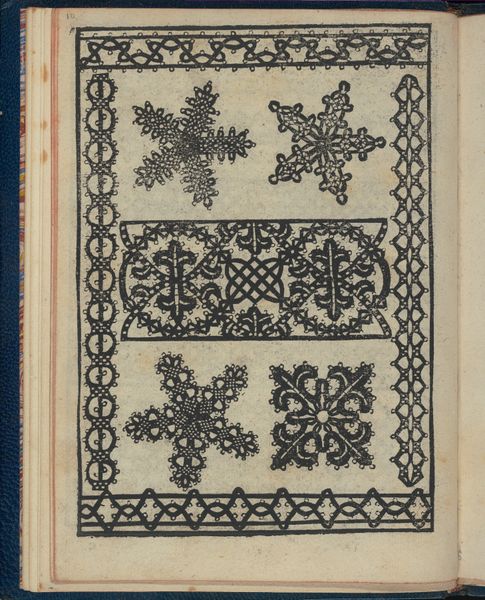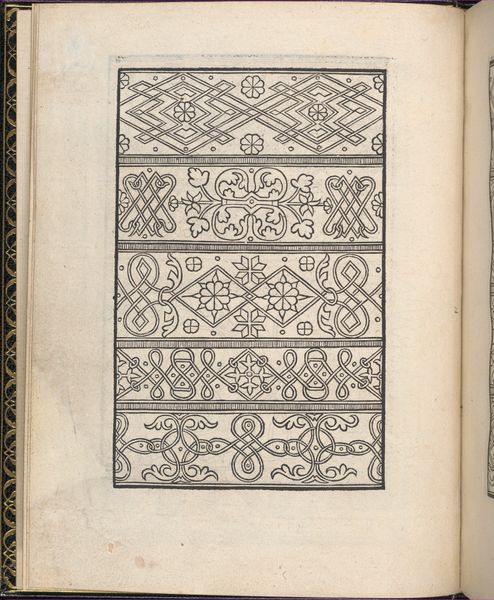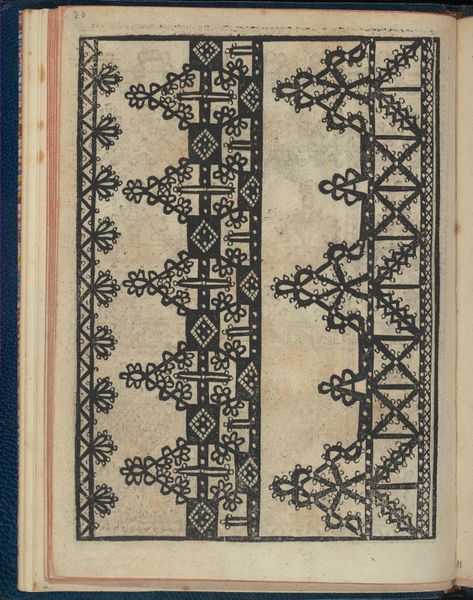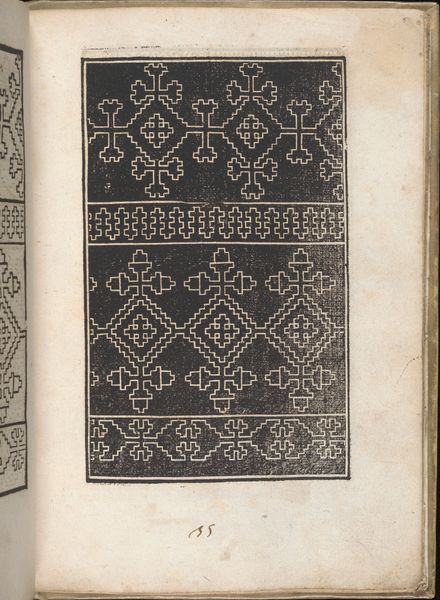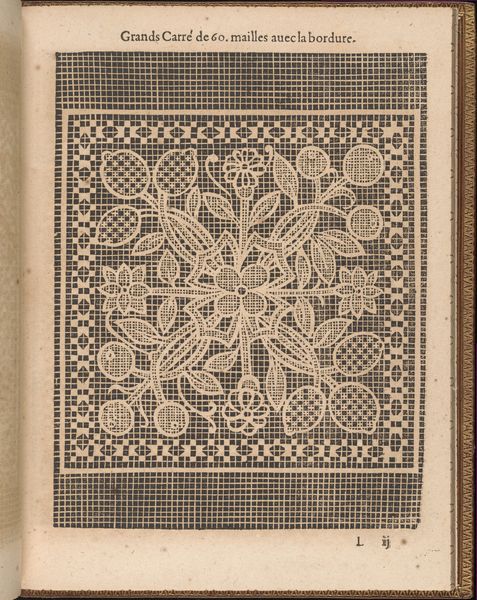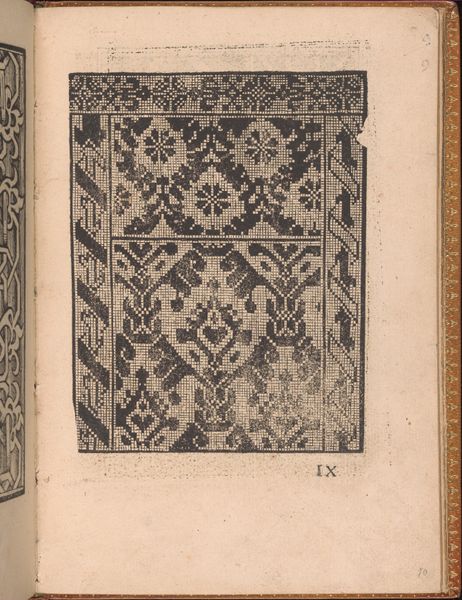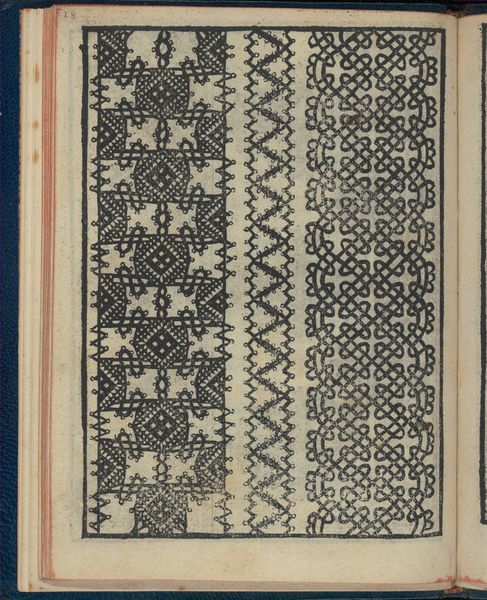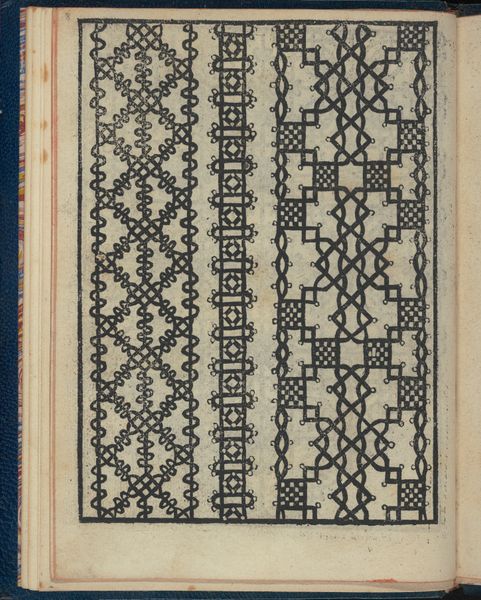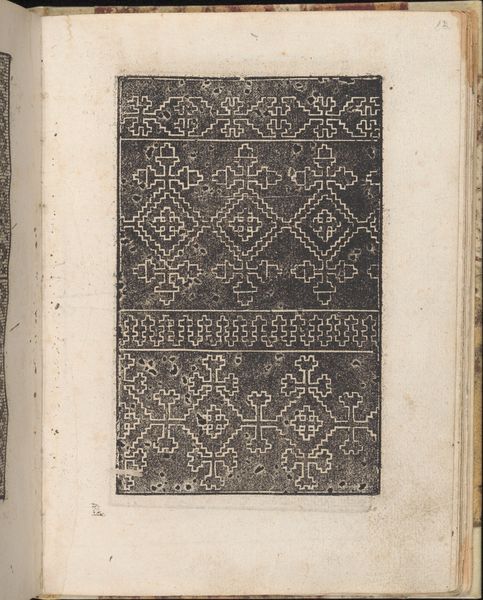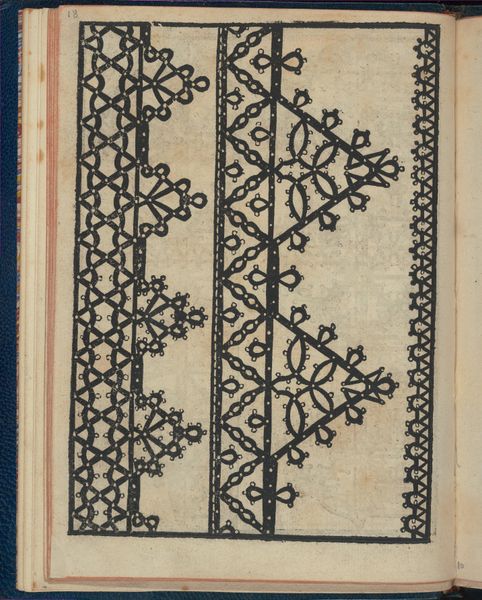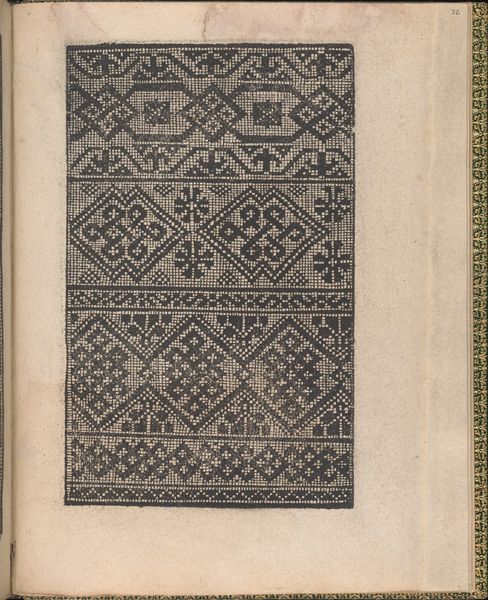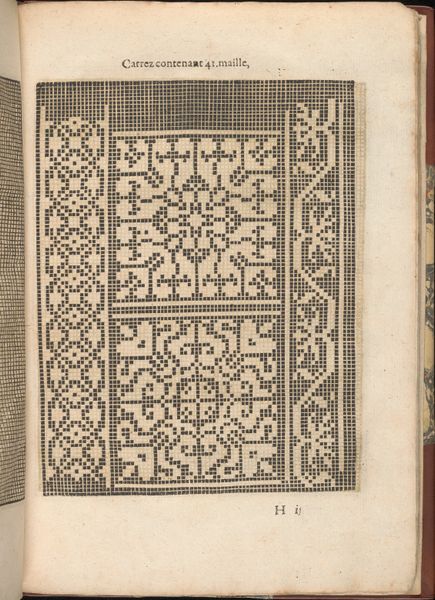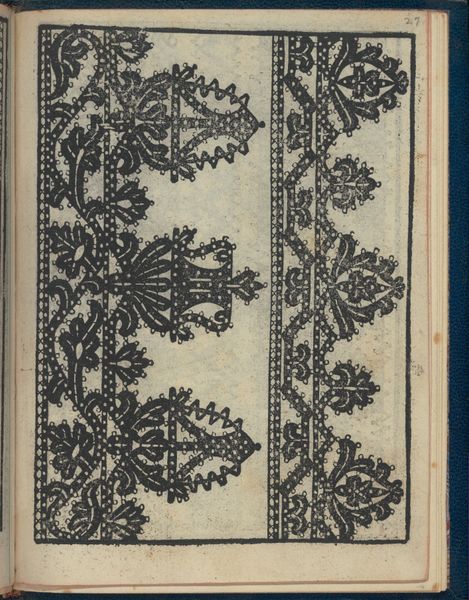
Le Pompe: Opera Nova, page 13 (verso) 1557
0:00
0:00
drawing, graphic-art, ornament, print
#
drawing
#
graphic-art
#
ornament
#
medieval
# print
#
book
Dimensions: Overall: 8 1/16 x 5 7/8 in. (20.5 x 15 cm)
Copyright: Public Domain
Editor: This is a page from "Le Pompe: Opera Nova," specifically page 13, created by Giovanni Battista and Marchio Sessa in 1557. It’s a print, featuring intricate lace patterns. I’m really struck by the detail and precision, and how dense the compositions are. How should we understand this work? Curator: Consider it a material record of production techniques, Editor. These prints weren't meant for a gallery wall, they were a crucial stage in the process of *making*. Editor: So, like, a guide book? Curator: More than that, it's an early form of instruction manual. The book is a vehicle for transmitting skilled labour, a template circulated among artisans. Think about the material implications: woodblock printing enabled widespread accessibility to designs previously held by guilds and elites. Who suddenly had access to create these pieces? Editor: So more people than just traditionally trained artisans? Was there something revolutionary in this wider distribution? Curator: Exactly. It democratized the means of design production. "High art" and "craft" are meaningless categories when the value of these prints lay in their utility for material production of lace. How would increased output shift the culture of clothing and interior decorating? Editor: So it’s not really about the image itself as much as about what the image enables? This little print was actually about the culture of textile design at the time, and how labour changed as a result of this democratization! Wow! Curator: Precisely. It shifts our focus from aesthetic contemplation to examining the social life of things and the labour behind them. Editor: This has definitely changed my view of "old" art. Thanks for putting a materialist perspective into practice here!
Comments
No comments
Be the first to comment and join the conversation on the ultimate creative platform.
